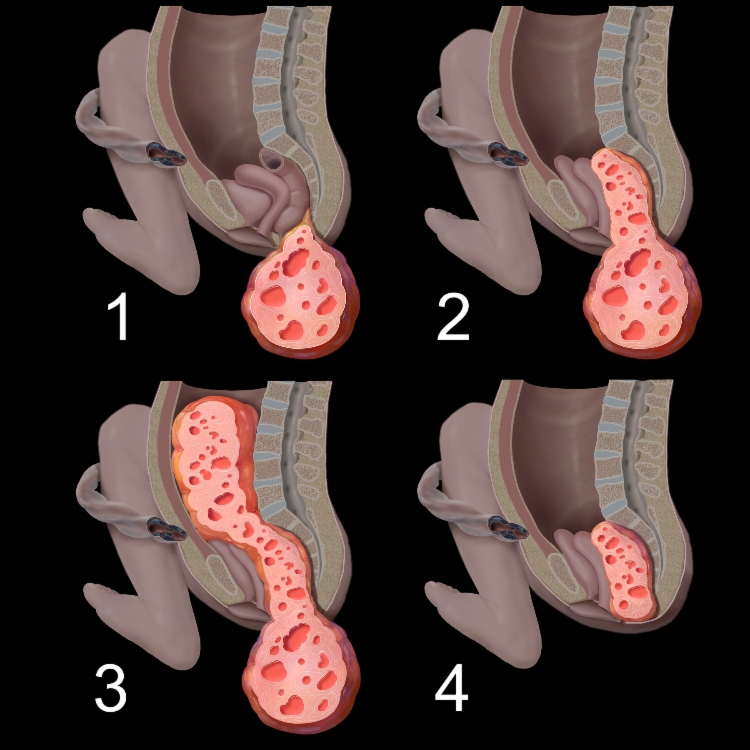KEY FACTS
Imaging
- •
Exophytic mixed cystic/solid mass extending from sacrum
- ○
Variable size but often large, with potential for extremely rapid growth
- ○
Commonly extends into pelvis and abdomen
- ○
- •
Solid tumors may have significant arteriovenous shunting
- ○
Color Doppler essential to evaluate vascularity
- ○
Scan every 1-3 weeks depending on size, vascularity, impending hydrops, and complications
- ○
- •
Calculate tumor volume:fetal weight ratio (TFR)
- ○
Tumor volume: Tumor length x width x depth x 0.523
- ○
Divide by estimated fetal weight
- ○
TFR > 0.12 prior to 24 weeks has poor prognosis
- ○
Top Differential Diagnoses
- •
Myelomeningocele in differential for cystic SCGT
- ○
Sac contains meninges + neural elements
- ○
Splayed posterior spinal ossification centers
- ○
Chiari 2 malformation of brain
- ○
Clinical Issues
- •
Large, solid, vascular tumors have high mortality and morbidity; better outcome for cystic tumors
- •
Prognosis significantly worse for fetus than neonate
- ○
Fetal diagnosis 30-50% mortality
- ○
Scanning Tips
- •
Carefully assess for intrapelvic extension as it is part of surgical classification
- •
Try to measure tumor in same plane each time
- •
Evaluate for signs of impending cardiovascular compromise
- ○
Tumor growth, amniotic fluid index, placental thickness
- ○
Any signs of developing hydrops (skin edema, pleural or pericardial effusion, ascites)
- ○
- •
Early vascular signs of high cardiac output state
- ○
Increased cardiothoracic ratio (> 50%)
- ○
Inferior cava diameter > 1 cm
- ○
Increase descending aortic velocity (> 120 cm/s)
- ○
- •
Look for complications: Tumor rupture/hemorrhage

 . This remained stable throughout gestation, and the prenatal course was uncomplicated. A cystic SCGT generally has a good prognosis.
. This remained stable throughout gestation, and the prenatal course was uncomplicated. A cystic SCGT generally has a good prognosis.
Stay updated, free articles. Join our Telegram channel

Full access? Get Clinical Tree








